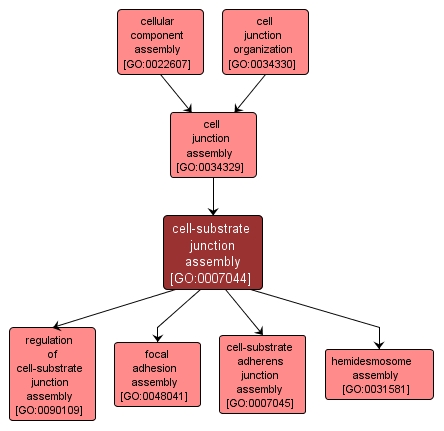GO TERM SUMMARY
|
| Name: |
cell-substrate junction assembly |
| Acc: |
GO:0007044 |
| Aspect: |
Biological Process |
| Desc: |
The aggregation, arrangement and bonding together of a set of components to form a junction between a cell and its substrate. |
|

|
INTERACTIVE GO GRAPH
|














